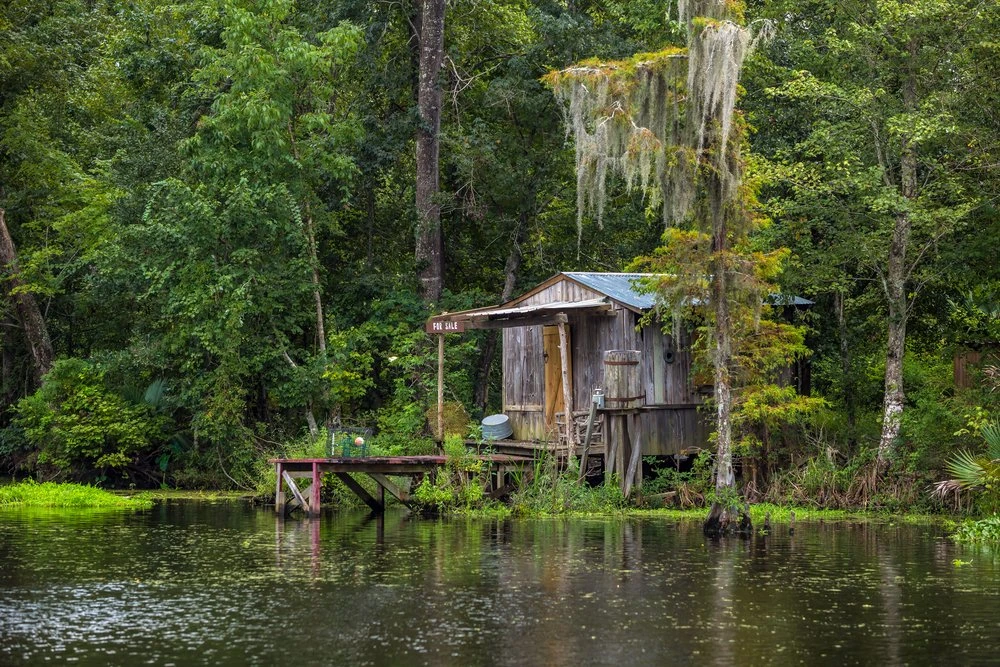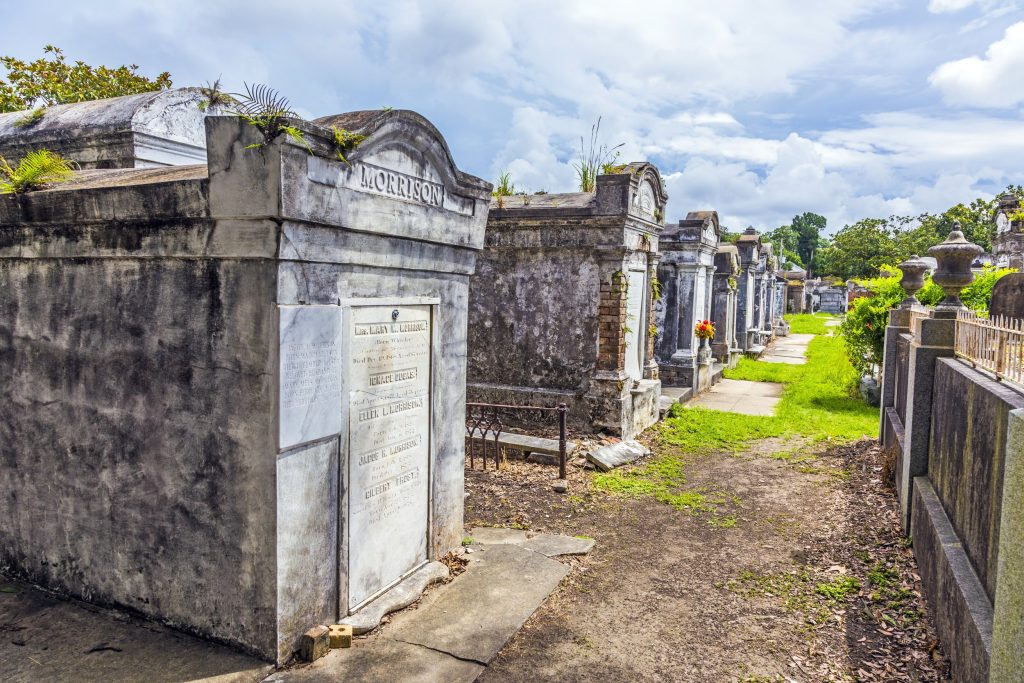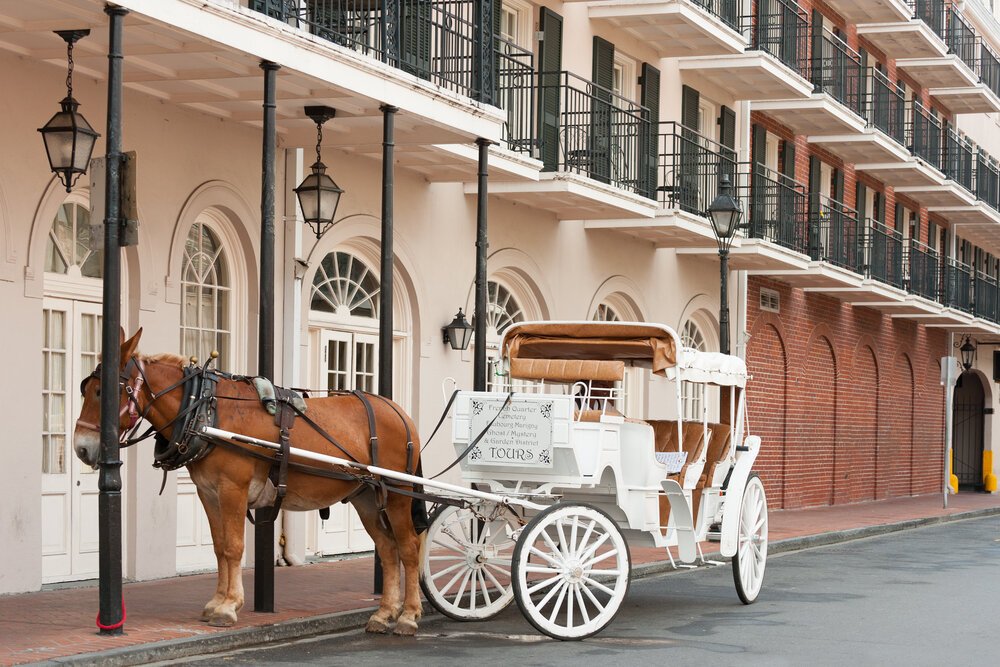Best New Orleans Swamp Tours

Discover your adventurous side during a bayou tour of New Orleans. Areas that are usually unreachable by foot can be reached by a boat tour through the shallow waters and canopied marshland revealing the city’s unrivaled beauty. Book a guided tour as an experienced boat captain offers in-depth information on the unique habitat that’s home to hundreds of animals. Here are the best 3 New Orleans swamp tours. Large Group Bayou Swamp Tours Soak in the sun while you enjoy a truly authentic New Orleans airboat tour. Packed with adventure, a swamp tour typically lasts one hour and forty-five minutes. Don’t forget your camera as you might come across wildlife like hawks, bald eagles, alligators, snakes and so much more. This tour is suitable for large and small groups. You can get a New Orleans airboat tour for bachelor and bachelorette parties, family outings, corporate events, school trips, and more. A large airboat can hold between 13 and 30 people depending on its size. For a more relaxed cruise, take the Covered Pontoon Swamp Boat. High Speed Airboat Tour Thrill-seekers, this one’s for you! Get a chance to hold an alligator as you ride on a motor-driven airboat. What better way to explore New Orleans than to take a fun high speed airboat swamp tour? You will glide comfortably over the marshland and deep into the secluded swamps. Your professional guide will give you helpful insight on the Bayou’s flora and fauna. Hold on as you alternate between gentle cruising and high-speed bursts. There will be plenty of chances to take photos of the wildlife you might encounter. Look out for bald eagles and baby alligators. Small Airboat Swamp Tour A small and private airboat tour may be the ideal choice for families and smaller groups of people. A small airboat can hold 6 to 10 passengers. If you want the ultimate comfort, choose a wholesome service that includes pick up and drop off at your local hotel. A boat ride on the swamps would include a visit to the marshland with glorious flora and fauna. You will also learn about the local legends and history of New Orleans. The waters are full of creatures like otters and alligators. There is no doubt that a trip to New Orleans is incomplete without experiencing the nature and wildlife in the nearby bayous and swamps. There are several tour operators that traverse the swampy areas for a chance to spot wild boars, gators, egrets and more. Choose from a fast-paced airboat tour or a slower educational cruise as you lurk in the murky waters. Whatever floats your boat, we hope you have an amazing time with the best airboat tour in New Orleans.
Top 7 Things to Do When Visiting New Orleans

From spooky cemeteries to the neon lit streets, the “Big Easy” has plenty to offer tourists. Just a stroll down Bourbon Street can prove to be the most memorable experience for those who visit the area, but there are many diverse activities for you to accomplish in your time here. We’ve rounded up our seven favorite things to do, no matter where you go in New Orleans. Top 7 Things to Do When Visiting New Orleans New Orleans is a vibrant and culturally rich city known for its lively music scene, delicious cuisine, and unique blend of French, African, and American influences. Whether you’re a history buff, a foodie, or a music lover, there’s something for everyone to enjoy in the Big Easy. From exploring the historic French Quarter to taking a swamp tour and experiencing the excitement of Mardi Gras, here are the top 7 things to do when visiting New Orleans. Key Takeaways 1. Explore the French Quarter Visit Jackson Square Jackson Square is a must-visit destination in the heart of the French Quarter. This historic park is surrounded by stunning architecture and is home to the iconic St. Louis Cathedral. Take a leisurely stroll through the square and soak in the vibrant atmosphere. Don’t forget to try a beignet from the famous Café du Monde, located just across the street. It’s a delicious treat that pairs perfectly with a cup of coffee. If you’re lucky, you might even catch a street performance by talented local musicians. Jackson Square is a great place to start your exploration of New Orleans. Experience the lively atmosphere of Bourbon Street Bourbon Street is the heart and soul of the French Quarter, known for its vibrant and energetic atmosphere. As you stroll down the street, you’ll be surrounded by lively music, colorful neon lights, and a bustling crowd. Indulge in the lively spirit of Bourbon Street by trying out the numerous bars and clubs that line the street. From classic jazz to modern beats, there’s a venue for every music lover. If you’re feeling hungry, be sure to sample some of the mouthwatering street food available. From delicious po’boys to savory jambalaya, the local cuisine will satisfy your taste buds. Don’t forget to grab a famous Hurricane cocktail, a signature drink of New Orleans, to complete your experience on Bourbon Street. For a unique shopping experience, explore the eclectic mix of shops and boutiques. From souvenir stores to vintage clothing shops, you’ll find something for everyone. Take a break from the lively atmosphere and browse through the unique offerings of the local vendors. Tip: While Bourbon Street is known for its lively nightlife, it can get crowded and rowdy, especially during peak tourist seasons. Be aware of your surroundings and take necessary precautions to ensure a safe and enjoyable experience. Try authentic Creole and Cajun cuisine When visiting New Orleans, one of the must-try experiences is the authentic Creole and Cajun cuisine. Gumbo, a hearty stew made with a variety of ingredients including meat, seafood, and vegetables, is a signature dish that embodies the flavors of both cuisines. Another popular dish is jambalaya, a flavorful rice dish cooked with a mix of meats, vegetables, and spices. Be sure to also indulge in crawfish étouffée, a rich and creamy dish made with crawfish tails smothered in a savory sauce. For dessert, don’t miss out on trying the famous beignets, deep-fried dough sprinkled with powdered sugar. These dishes showcase the unique blend of French, Spanish, African, and Native American influences that make up the vibrant culinary scene of New Orleans. To fully appreciate the flavors of Creole and Cajun cuisine, consider visiting one of the many renowned restaurants in the city. From casual eateries to upscale dining establishments, there are options to suit every taste and budget. Some popular restaurants known for their Creole and Cajun dishes include Commander’s Palace, Emeril’s, and Cochon. Whether you’re a seafood lover or a fan of spicy flavors, New Orleans offers a culinary experience like no other. Discover the historic architecture New Orleans is known for its rich history and stunning architecture. As you explore the city, you’ll be captivated by the beautiful buildings that showcase the unique blend of French, Spanish, and American influences. The historic architecture in New Orleans tells a story of the city’s past and reflects its diverse cultural heritage. One notable example of historic architecture in New Orleans is the St. Louis Cathedral, located in Jackson Square. This iconic landmark is the oldest continuously active Roman Catholic cathedral in the United States. Its stunning Gothic Revival style and intricate details make it a must-visit for architecture enthusiasts. To fully appreciate the historic architecture in New Orleans, consider taking a guided walking tour. These tours provide fascinating insights into the different architectural styles and the stories behind the buildings. You’ll learn about the preservation efforts and the challenges faced in maintaining these historic structures. Whether you’re an architecture enthusiast or simply appreciate the beauty of old buildings, exploring the historic architecture in New Orleans is a must-do when visiting the city. 2. Immerse yourself in the music scene Listen to live jazz at Preservation Hall Preservation Hall is a must-visit for jazz enthusiasts. Located in the heart of the French Quarter, this iconic venue has been showcasing traditional New Orleans jazz since 1961. Immerse yourself in the soulful melodies and infectious rhythms of live jazz performances by talented local musicians. The intimate setting of Preservation Hall creates an intimate and authentic experience, allowing you to truly appreciate the artistry and improvisation of this unique musical genre. If you’re lucky, you might even catch a performance by some of the legendary jazz musicians who have graced the stage at Preservation Hall over the years. From the moment you step inside, you’ll be transported back in time to the golden age of jazz. Feel the energy as the musicians play their instruments with passion and skill, creating a vibrant atmosphere that is sure to leave you wanting more. To make the most of your visit to Preservation Hall, here are a few
History And Culture Of New Orleans

Without doubt one of the most beautiful cities in the world, New Orleans is strategically positioned along the Mississippi River. While New Orleans has been plagued with problems synonymous with coastal U.S cities it has remained defiant by choosing to preserve its rich culture and history. The First inhabitants of New Orleans The original inhabitants of New Orleans were a mixture of Canadian, Woodlands, and Mississippi cultures. The city of New Orleans was named the capital of Louisiana in 1722. The French colony took control of the city in 1723, transforming it into a vibrant hub of trading and commerce. The signing of the Treaty of Paris in 1763 saw Spain taking control of the city. It is during Spain’s 37-year rule that the city saw massive growth in trade and culture. During this period, the Great Fires of New Orleans in 1788 devastated most of the French architecture. It took over six years to rebuild, though shortly after another fire brought down a third of the city. The Spanish colony later relinquished Louisiana back to France. Then Napoleon sold the city to the United States in what was known as the Louisiana Purchase of 1803. Hurricane Katrina Hurricane Katrina was one of the worst storms to hit New Orleans. It swept across the city, displacing and killing many people. The date August 29th, 2005 when the category 5 hurricane made landfall remains one of the darkest days for the city of New Orleans. Food A common meal here is the Po’Boys sandwich which is made on a baguette-like French bread. The locals love it covered in vegetables and condiments. Another popular food is red beans and rice. This dish was historically served on Mondays. In the past, Mondays were traditionally laundry day when women of the household would be preoccupied with washing. They preferred to cook rice and beans on this day because it required minimal preparation. Music & Dance There is no better sound than New Orleans Jazz. The style is a bit faster than jazz found on the east coast. The earliest form of jazz was the Dixieland. It has since evolved into brass bands consisting of five to ten members that perform in the local streets and bars of New Orleans. Architecture Creole Townhouses are a common architectural style found in the French Quarter. They are made of bricks and have two or three-story balconies. Many of these buildings were destroyed by the fires in the 1700s, however, were later rebuilt by the Spanish. Shotgun Houses have an open concept with one room leading to other rooms without hallways. This style is great for hot climates because the space can be easily cooled down by opening both the front and back doors to allow a breeze through the entire house. The People of New Orleans New Orleans has a rich and diverse culture consisting of people from all walks of life. Some of these cultures include the Creole people who speak both French and Spanish and the Cajuns who are of French Canadian origin. To this day, New Orleans remains a place rich in culture and people who take pride in their city. Since the very first inhabitants, the people of New Orleans have continued to hold true to their traditions and remain strong when faced with challenges.
